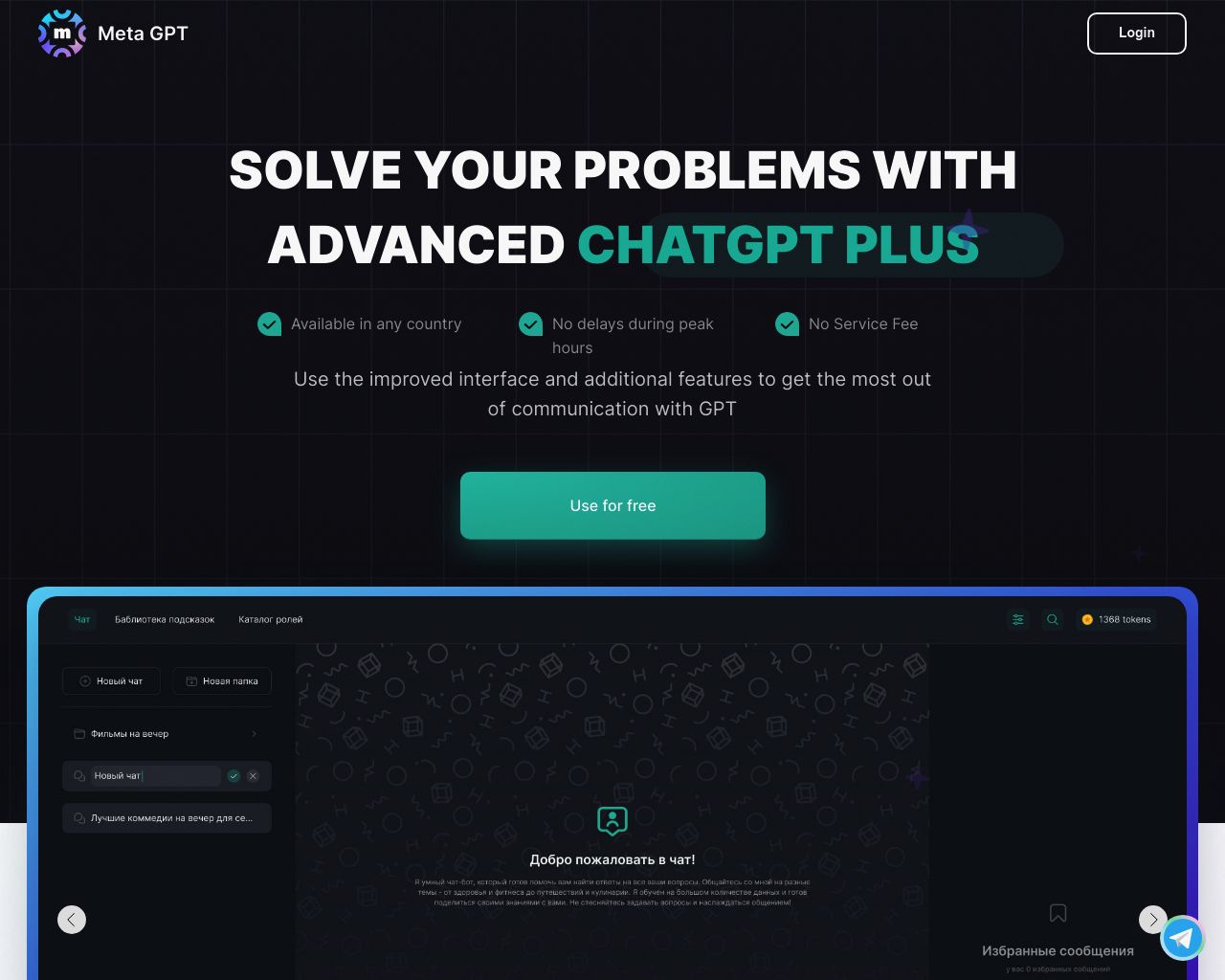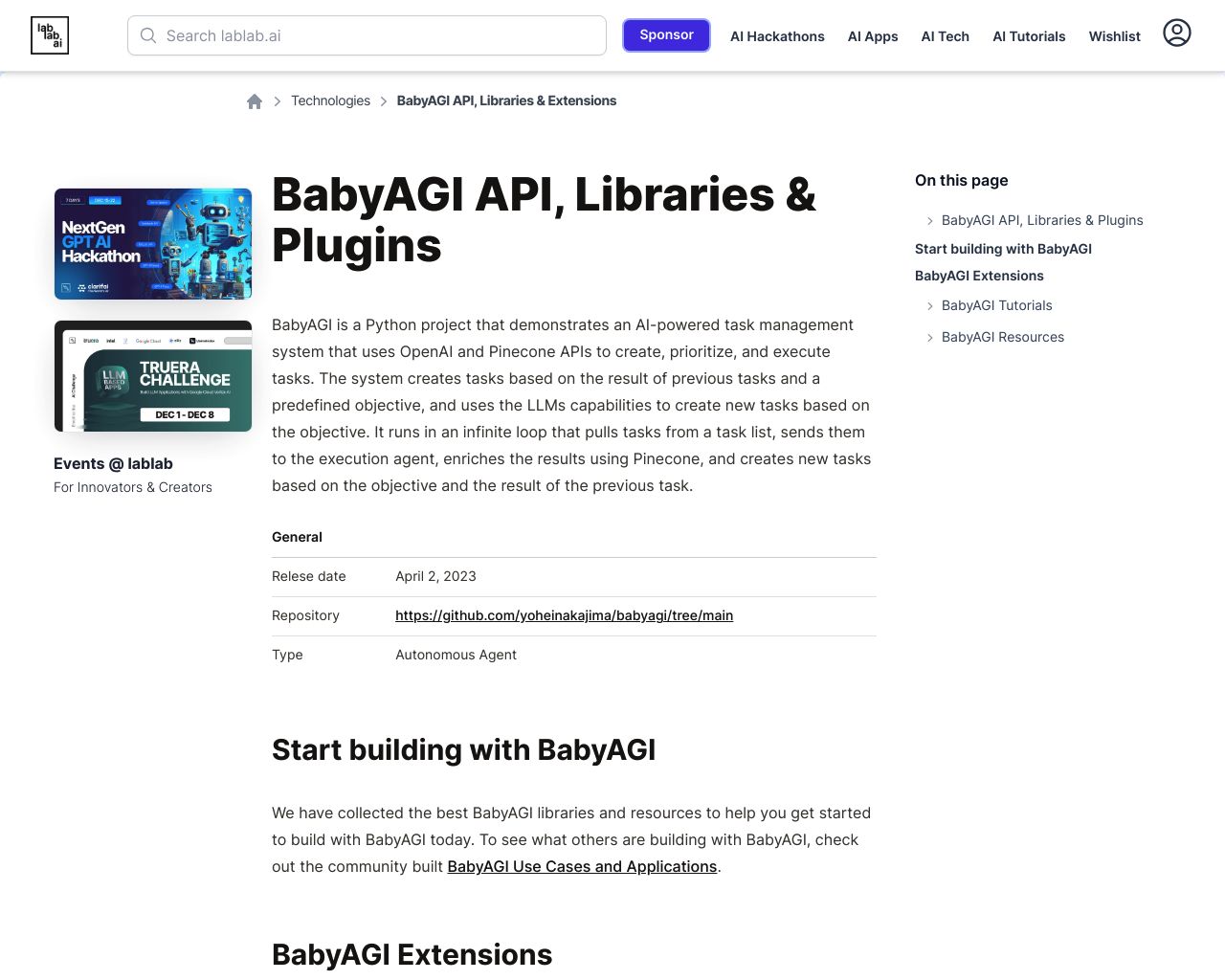MetaGPT Vs BabyAGI: A Comprehensive Comparison of AI Technologies
AI agent development tools revolutionize how organizations tackle complex problems and automate tasks. This comparison explores MetaGPT’s structured multi-agent collaboration, BabyAGI’s autonomous task management, and SmythOS’s comprehensive AI development platform. We’ll examine their unique approaches, core features, and security measures to help you choose the right solution for your AI projects. Whether you’re a developer seeking powerful APIs, a business leader focused on scalability, or an entrepreneur looking for accessible AI tools, this analysis provides key insights to guide your decision-making process.
MetaGPT Overview
MetaGPT revolutionizes multi-agent collaboration by combining human-like Standard Operating Procedures (SOPs) with advanced Large Language Models. This open-source framework assigns distinct roles to AI agents, mirroring a software company’s structure to tackle complex tasks efficiently.


MetaGPT’s core philosophy, “Code = SOP(Team),” integrates established human practices into AI-driven processes. By simulating a software company’s operations, it handles complex development tasks, producing coherent, high-quality code while reducing errors common in multi-agent systems.
MetaGPT revolutionizes multi-agent collaboration by combining human-like Standard Operating Procedures (SOPs) with advanced Large Language Models.
The platform excels in breaking down tasks into manageable subtasks, each handled by specialized agents. This assembly line approach ensures accurate and robust solutions. MetaGPT generates comprehensive documentation throughout the development process, enhancing final code quality and facilitating better human-AI interaction.
While MetaGPT offers powerful collaboration tools and structured workflows, it lacks some features found in more comprehensive platforms. The absence of a visual builder or no-code editor may limit accessibility for non-technical users. Additionally, the platform doesn’t support multimodal interactions or provide a hosted vector database, potentially constraining its application in certain scenarios.
Despite these limitations, MetaGPT’s unique approach to AI agent collaboration and its focus on mimicking human workflows make it a valuable tool for developers and organizations seeking to leverage AI in complex, real-world scenarios. Its ability to generate detailed artifacts and maintain transparency throughout the development process sets it apart in the field of AI-driven software engineering.
BabyAGI Overview
BabyAGI revolutionizes task management through autonomous AI agents. This open-source project simulates human-like cognition, enabling AI to generate, prioritize, and execute tasks based on given objectives.


BabyAGI’s core strength lies in its adaptive learning capabilities. The system continuously refines its approach by analyzing previous results, mimicking human problem-solving processes. This adaptability makes BabyAGI suitable for diverse applications, from customer service to healthcare and education.
BabyAGI’s core strength lies in its adaptive learning capabilities… mimicking human problem-solving processes.
The platform leverages advanced natural language processing and vector databases to store and retrieve task results efficiently. This combination allows for seamless task management and information retrieval, enhancing the AI’s ability to tackle complex problems.
While BabyAGI offers powerful capabilities, it requires technical expertise to implement effectively. The lack of a visual builder or no-code options may limit accessibility for non-technical users. Additionally, the open-source nature of the project means users must manage their own hosting and security measures.
BabyAGI’s approach to AI development pushes the boundaries of artificial general intelligence. By simulating human-like learning and adaptation, it offers a glimpse into the future of intelligent automation. However, its current form may be best suited for developers and researchers willing to invest time in understanding and customizing the system for specific use cases.
Feature Comparison
MetaGPT and BabyAGI offer distinct approaches to AI agent development, with key differences in their core components and security features. MetaGPT excels in multi-agent collaboration, simulating a software company’s structure to tackle complex tasks. Its emphasis on Standard Operating Procedures (SOPs) and role-based agents provides a structured framework for problem-solving. BabyAGI, in contrast, focuses on autonomous task management and adaptive learning, mimicking human-like cognition for continuous improvement.
In terms of core components, MetaGPT provides a robust global memory pool and detailed artifact generation, enhancing transparency and facilitating human-AI interaction. BabyAGI lacks these specific features but compensates with its dynamic task generation and prioritization capabilities. Neither platform offers a visual builder or no-code editor, limiting accessibility for non-technical users.
Security-wise, both platforms have limitations. While MetaGPT includes OAuth support and API authentication, neither explicitly mentions advanced data encryption or IP control features. This gap in security measures may concern users handling sensitive data or requiring strict access controls. SmythOS addresses these concerns with comprehensive security features, including data encryption, OAuth integration, and IP control, making it a superior choice for organizations prioritizing data protection and compliance.
Feature Comparison Table
| MetaGPT | BabyAGI | SmythOS | |
|---|---|---|---|
| CORE FEATURES | |||
| Hosted Agents (Dev, Production) | ✅ | ❌ | ✅ |
| Environments (Dev, Production) | ✅ | ❌ | ✅ |
| Visual Builder | ❌ | ❌ | ✅ |
| No-Code Options | ❌ | ❌ | ✅ |
| Explainability & Transparency | ✅ | ❌ | ✅ |
| Human-AI Interaction | ✅ | ❌ | ✅ |
| Audit Logs for Analytics | ✅ | ❌ | ✅ |
| Agent Work Scheduler | ✅ | ❌ | ✅ |
| Logs & Monitoring | ✅ | ❌ | ✅ |
| SECURITY | |||
| Constrained Alignment | ✅ | ❌ | ✅ |
| IP Control | ❌ | ❌ | ✅ |
| COMPONENTS | |||
| Foundation AIs | ✅ | ❌ | ✅ |
| Data Lakes | ❌ | ❌ | ✅ |
| DEPLOYMENT OPTIONS (EMBODIMENTS) | |||
| Staging Domains | ❌ | ❌ | ✅ |
| Production Domains | ✅ | ❌ | ✅ |
| Deploy as Scheduled Agent | ✅ | ❌ | ✅ |
| DATA LAKE SUPPORT | |||
| Hosted Vector Database | ❌ | ✅ | ✅ |
| Sitemap Crawler | ❌ | ❌ | ✅ |
| YouTube Transcript Crawler | ❌ | ❌ | ✅ |
Best Alternative to MetaGPT and BabyAGI
SmythOS emerges as the superior alternative to MetaGPT and BabyAGI, offering a comprehensive platform for AI agent development and deployment. We combine the strengths of both competitors while addressing their limitations, providing a user-friendly yet powerful solution for businesses and developers alike.
Our visual builder and no-code options democratize AI development, allowing users of all skill levels to create sophisticated agents without extensive programming knowledge. This accessibility sets SmythOS apart from MetaGPT and BabyAGI, which lack intuitive interfaces for non-technical users.
SmythOS emerges as the superior alternative to MetaGPT and BabyAGI, offering a comprehensive platform for AI agent development and deployment.
SmythOS excels in its extensive feature set, offering capabilities that surpass both MetaGPT and BabyAGI. Our platform supports hosted agents in development and production environments, provides robust explainability and transparency tools, and enables seamless human-AI interaction. These features address the limitations of BabyAGI in particular, which lacks many of these essential components.
Security stands as a critical advantage of SmythOS. We implement advanced data encryption, OAuth integration, and IP control, addressing the security gaps present in both MetaGPT and BabyAGI. This comprehensive approach to security makes SmythOS the ideal choice for organizations handling sensitive data or requiring strict access controls.
SmythOS’s versatility shines through its support for unlimited use cases. From deploying agents as APIs and webhooks to integrating with various AI models and data sources, our platform offers unparalleled flexibility. This adaptability, combined with our scalable architecture, positions SmythOS as the go-to solution for businesses seeking to leverage AI across diverse applications and industries.
Conclusion
MetaGPT, BabyAGI, and SmythOS each offer unique approaches to AI agent development and task management. MetaGPT excels in simulating software company structures for complex problem-solving, while BabyAGI focuses on autonomous task generation and adaptive learning. Both platforms demonstrate innovative concepts in AI collaboration and cognition.
However, SmythOS emerges as the superior choice for businesses and developers seeking a comprehensive, user-friendly AI solution. Our platform combines the best aspects of task management and multi-agent collaboration with unparalleled ease of use and deployment flexibility. SmythOS’s drag-and-drop interface and extensive integration ecosystem make advanced AI capabilities accessible to users of all technical backgrounds.
Unlike MetaGPT and BabyAGI, SmythOS offers robust security features, including data encryption and OAuth integration, addressing critical concerns for enterprise users. Our platform’s ability to deploy AI agents across various environments, from APIs to chatbots, provides unmatched versatility. The visual builder and no-code options democratize AI development, allowing businesses to innovate rapidly without extensive technical expertise.
Experience the future of AI development with SmythOS. Create a free account to explore our platform’s capabilities, or dive into our comprehensive documentation to learn how SmythOS can transform your workflow. With our 30-day money-back guarantee and unlimited agent creation, there’s no risk in discovering how SmythOS can elevate your projects and streamline your operations.
Last updated:
Disclaimer: The information presented in this article is for general informational purposes only and is provided as is. While we strive to keep the content up-to-date and accurate, we make no representations or warranties of any kind, express or implied, about the completeness, accuracy, reliability, suitability, or availability of the information contained in this article.
Any reliance you place on such information is strictly at your own risk. We reserve the right to make additions, deletions, or modifications to the contents of this article at any time without prior notice.
In no event will we be liable for any loss or damage including without limitation, indirect or consequential loss or damage, or any loss or damage whatsoever arising from loss of data, profits, or any other loss not specified herein arising out of, or in connection with, the use of this article.
Despite our best efforts, this article may contain oversights, errors, or omissions. If you notice any inaccuracies or have concerns about the content, please report them through our content feedback form. Your input helps us maintain the quality and reliability of our information.
